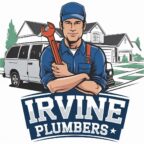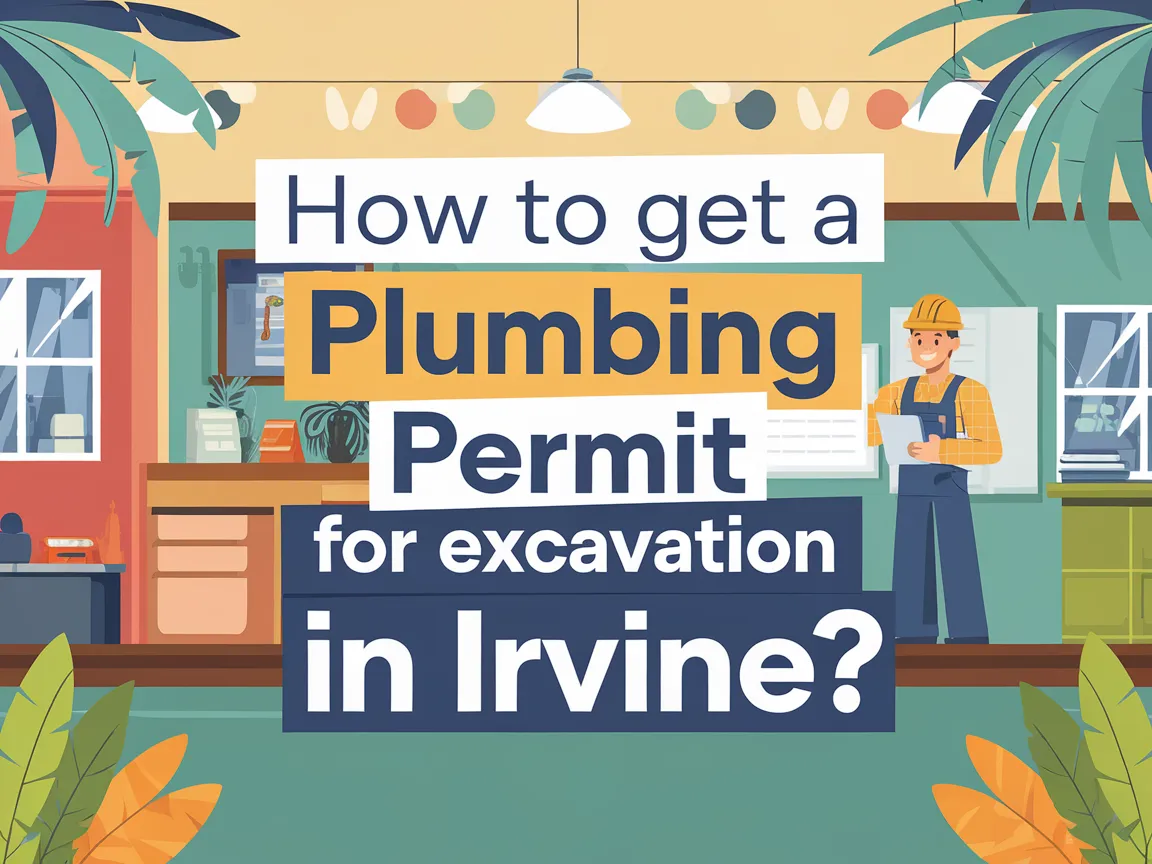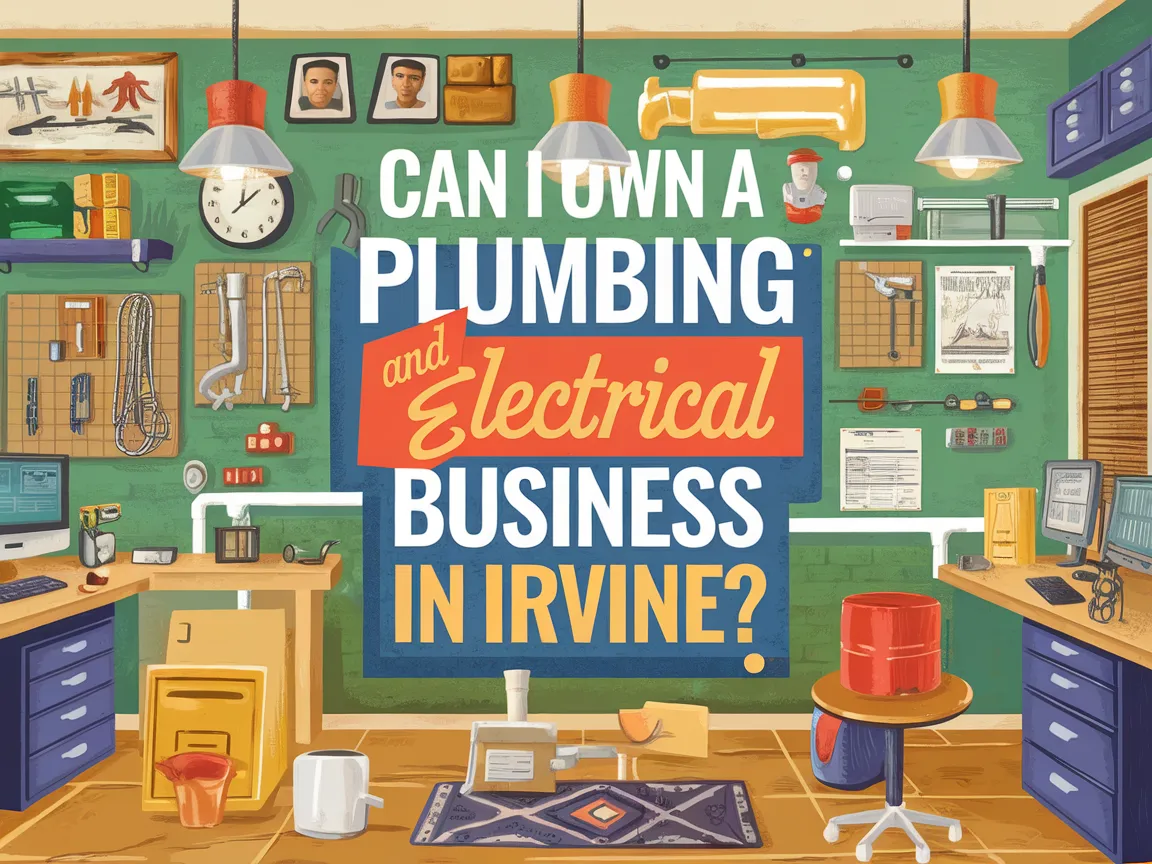Is Cast Iron Plumbing Bad?
Last Updated: February 27, 2025
Plumbing is the system that brings water in and takes waste out of our homes. Think of it like a series of pipes that help us clean, drink, and flush things away.
A common plumbing mystery I help solve is the question of is cast iron plumbing bad, which I’ve encountered in many homes here in Irvine. I’m here to guide you through the important points, solutions, and tips for maintaining or replacing cast iron plumbing.
This article will cover essential topics like evaluating cast iron plumbing, costs of maintenance and replacement, factors affecting its quality, special considerations, and when to consult an expert.
Table of Contents
- Is Cast Iron Plumbing Bad?
- What is Plumbing?
- Before You Start Considering Cast Iron Plumbing, Here Are Key Points
- How to Evaluate Cast Iron Plumbing in Your Home
- How Much Does Cast Iron Plumbing Cost to Maintain and Replace?
- What Factors Affect the Quality Of Cast Iron Plumbing?
- Is Cast Iron Plumbing Worth the Investment?
- Special Considerations When Dealing With Cast Iron Plumbing
- Understanding the Environmental Impact of Cast Iron Plumbing
- Health and Safety Concerns with Cast Iron Plumbing
- When to Consult an Expert About Your Cast Iron Plumbing?
- DIY Vs. Hiring a Pro
- Cost and Timeline Considerations
- Your Plumbing Partner in Irvine
- Final Thoughts on Cast Iron Plumbing and Its Impact on Your Home
- Useful References
Is Cast Iron Plumbing Bad?
Yes, cast iron plumbing can be problematic. Over time, it can corrode or rust, leading to leaks and blockages. If your home has cast iron pipes from the 1960s or earlier, it’s wise to consider upgrades. Regular inspections help prevent serious issues.
What is Plumbing?
Plumbing refers to the system responsible for transporting water, waste, and gases in your home or structure. This intricate system includes pipes (Tubes for Fluids), fixtures (Toilets, Sinks, Faucets), and appliances (Like Dishwashers) that water runs through, using materials like copper, PVC, or even PEX (Cross-linked Polyethylene). On average, a household needs about 7,000 liters (About 1,850 Gallons) of water per month! Unfortunately, many homeowners in the Irvine area often overlook their plumbing systems until something goes wrong. When you need professional water heater installation, expert plumbers can help.
I remember tackling a project at a home in Orange County, replacing what’s known as cast iron pipe—which can rust and corrode over the years. With this being a hot topic, you’d be shocked to hear discussions popping up on social media about concerns regarding cast iron plumbing. Let’s not forget, on average, replacing cast iron plumbing could cost you between $3,000 and $15,000, depending mainly on the extent of your home’s plumbing needs and configuration.
Before You Start Considering Cast Iron Plumbing, Here Are Key Points
What do you need to get ready for dealing with cast iron pipes? Here’s your checklist.
- Pipe Wrench: You’ll need a pipe wrench, like the Ridgid 31495 Model, to grip and turn those heavy-duty cast iron pipes. It’s crucial for maneuvering tight joints and fittings during your assessment.
- Safety Goggles: Don’t forget safety goggles, such as the DEWALT DPG82-11CTR, since you’ll be working on plumbing that can dislodge sharp materials. They protect your eyes from dust and debris.
- Drain Cleaner: Consider using a heavy-duty drain cleaner like Zep Hydro, especially if you’re facing clogs. Cast iron can hold mysterious gunk, and you might need every tool in the box.
- Pro Shell Gloves: You definitely want to wear pro shell gloves, like the Megamon Dotted Driving Gloves, to guard your hands when handling rusty, potentially sharp edges on the cast iron.
- Bucket or Small Container: A sturdy bucket, such as a Rubbermaid Roughneck, is essential for catching any debris or water that might spill out as you work through this process.
We have now covered essential considerations for cast iron plumbing. Next, we will discuss how to assess it in your home.
Also See: Can You Use Electrical Solder for Plumbing? Find Out!
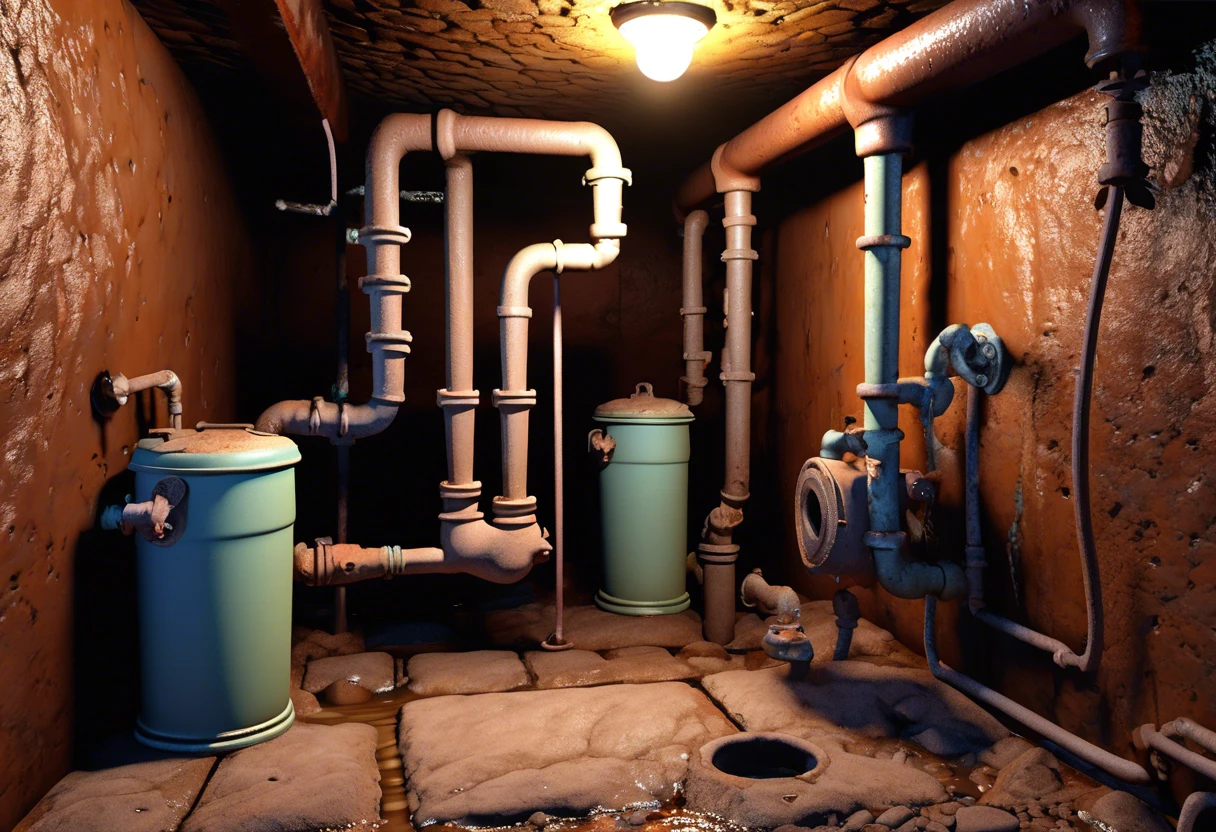
How to Evaluate Cast Iron Plumbing in Your Home
Wanna know how to tell if your cast iron plumbing is giving you trouble? Here’s a straightforward guide for you.
-
Check for Signs Of Corrosion
Take a close look at your pipes for leaks, rust, or those pesky corrosion spots. These signs can tell you a lot about your plumbing’s condition. Focus on the areas near fixtures; that’s usually where issues pop up over time.
Living in Irvine? Our local soil and the fire season’s dryness can wear out those cast iron pipes faster. Knowing common issues helps you evaluate more accurately. If you’re worried about potential overcharging, you might want to spot plumbing scam warning signs.
-
Assess Performance With a Water Flow Test
Turn on all the faucets in your house; this will help you gauge flow rates. A drop in performance is usually a sign of bigger problems lurking. Stick around to listen for gurgling noises; that indicates pipe blockages in your cast iron plumbing.
Don’t forget to check smaller appliances too, like your washing machine. Low pressure could mean potential issues further down the line. Consistent weak flow can signal other plumbing headaches waiting to happen.
-
Consult a Plumbing Professional
Bring in a local plumbing expert who knows the ins and outs of our Irvine water and soil. Share any worries you have about corrosion or drops in performance. They can give you tailored advice on whether you need a replacement or some simple fixes. If you’re renting and unsure about your plumbing maintenance responsibilities.
A knowledgeable plumber will provide insights into the history of your pipes, shedding light on the drawbacks of cast iron. Plus, they’ll have the right tools and expertise—you definitely don’t want to miss that! If you’re curious about the journey to becoming a skilled professional, check out the path to plumbing expertise.
-
Consider Upgrading to Modern Alternatives
Think about replacing those old pipes with modern materials like PVC or PEX. These options usually last longer, handle our unique soil conditions better, and are lighter, which makes installation a breeze.
It’s a smart long-term choice. It gives you one less thing to stress about while everything else stresses you out! Upgrading typically costs between $60 to $100 per foot ($200 to $330 Per Meter) for replacement—totally worth it when you think about the headaches you can avoid.
Pro Tip: Don’t underestimate the value of proactive evaluations. Taking action early could save you from some major plumbing disasters later on!
So far we covered evaluating cast iron plumbing in your home. Let’s look at the costs associated with maintaining and replacing it next.
How Much Does Cast Iron Plumbing Cost to Maintain and Replace?
Keeping up with cast iron plumbing can really vary, ranging from about $200 to $7,500 based on issues from simple repairs to major replacements. Seriously, things can get wonky because you might encounter unanticipated expenses—a corroded pipe may seem like a simple tweak but can lead to yard digging, and that costs extra! Personally, if I were budgeting, I’d bank on around $3,000 and, y’know, allow for some wiggle room for surprise costs, aiming to tackle replacement every 50 to 70 years throughout your ownership period.
Cost Breakdown Of Cast Iron Plumbing
| Service | Low Estimate | High Estimate |
|---|---|---|
| Simple Repair (Leaks or Chimneys) | $200 | $600 |
| Pipe Replacement (Bathroom/kitchen) | $1,500 | $4,000 |
| Full System Replacement (Entire House) | $3,000 | $7,500 |
| DIY Repair Materials | $50 | $200 |
You should now have a good understanding of cast iron plumbing maintenance costs and replacement expenses. If you’re looking to expand your technical knowledge, I recommend learning how to install a pressure tank properly. In the next part, we’ll discuss factors influencing plumbing quality.
What Factors Affect the Quality Of Cast Iron Plumbing?
So, what factors influence whether cast iron plumbing is seen as problematic? It’s a great question, and understanding this can help you keep your home running smoothly.
-
Age of the Pipes: Older cast iron pipes can rust and corrode, leading to serious issues. If your home’s plumbing is over 50 years old, it’s worth a closer look.
-
Environmental Conditions: In damp areas like Irvine, CA, underground moisture can speed up deterioration. It’s like Mother Nature’s way of saying, “Hey, take care of your pipes!”
-
Chemical Exposure: Certain household cleaning products can harm the integrity of cast iron. Simple bleach, for example, might be a no-go if you want to keep your pipes happy.
-
Installation Quality: Poorly installed cast iron pipes can lead to misalignment issues and leaks. If you’re hearing gurgling sounds or see water stains, consider getting a pro to check it out. When persistent phantom flushing disrupts your bathroom’s normal operation, you might need professional intervention to diagnose hidden plumbing complications.
We’ve wrapped up the factors influencing cast iron plumbing quality. Let us turn our attention to the value of this investment.
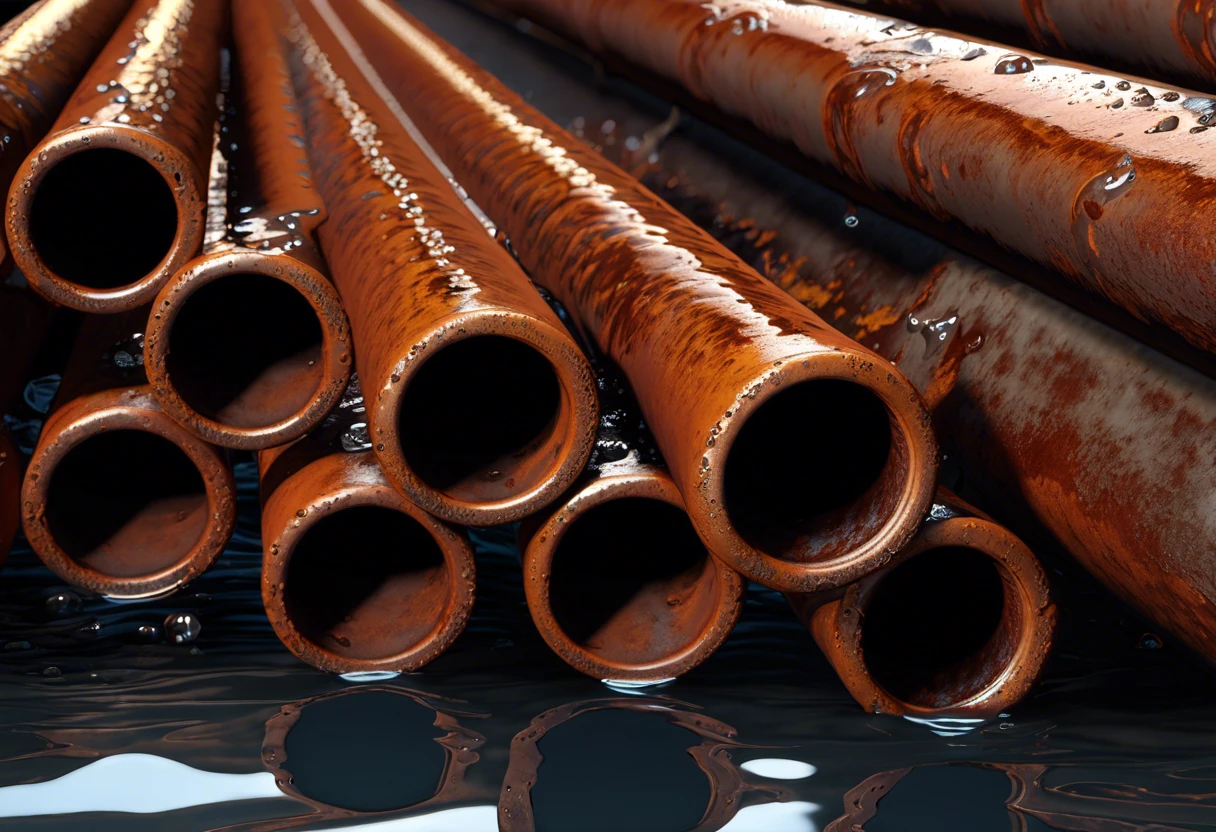
Is Cast Iron Plumbing Worth the Investment?
Understanding whether cast iron plumbing is worth your investment involves considering its lifespan, repairs, and resale value. Here’s a breakdown to help you decide.
Comparative Lifespan of Plumbing Materials
| Material | Average Lifespan | Typical Costs | Pros | Cons |
|---|---|---|---|---|
| Cast Iron | 50-70 years | $3,000 – $15,000 | Durability, sound-dampening | Corrosion, heavy weight |
| PVC | 25-40 years | $1,000 – $5,000 | Lightweight, resistant to corrosion | Can warp under heat |
| PEX | 40-50 years | $1,500 – $7,000 | Flexibility, ease of installation | Not as durable as metal |
Assessing Return on Investment (ROI)
When considering whether cast iron plumbing is bad or good for your home, think about ROI. Upgrading to piping that’s less prone to rusting can enhance your home’s market value. If you plan on selling soon, prospective buyers might prefer modern materials. Selecting the right water hose diameter can significantly impact your plumbing system’s overall performance and optimize water flow efficiency.
In Irvine, where homes with updated plumbing systems tend to sell faster, being proactive about your plumbing can be a smart move. It’s like investing in your home’s future—keeping it fire-season ready and easier to manage! If you’re considering expanding your professional skills, you might want to explore plumbing business opportunities.
The Eco-Factor: Sustainability in Plumbing Choices
Let’s dive into the environmental aspect as well. Think about sustainability—cast iron is recyclable! If you decide to replace your cast iron plumbing, ensure the old pipes are disposed of responsibly. Plus, new materials like PVC and PEX can be made from recycled contents, reducing your carbon footprint.
So, when you think about whether is cast iron plumbing bad, also consider what fits best for your eco-friendly lifestyle!
Special Considerations When Dealing With Cast Iron Plumbing
When handling cast iron plumbing, it’s crucial to understand specific technical factors to avoid complications.
- Pipe Weight: Cast iron pipes are heavy—around 4.5 to 15 kg (10 to 30 Lbs) per meter (3 Feet). This weight demands extra careful handling and support during installation or replacement.
- Crouch Spacing: Place bends or junctions 1.8 meters (6 Feet) apart to ensure adequate support. Unsupported sections can lead to sagging and premature failure.
- Corrosive Factors: Beware of corrosion due to moisture. Using protective paint or lining can help, but be aware that additional costs can range from $200 to $500 for 15 to 30 meters (50 to 100 Feet) of pipe.
- Scripts and Rostering: Expect that old pipes may need compaction where rot occurs. “Scripts” refer to detailed installation steps and marked paths. Make sure to adhere to plumbing codes, ensuring installation plans are solid.
Understanding the Environmental Impact of Cast Iron Plumbing
Cast iron plumbing isn’t just about function; it has some serious environmental considerations too. Here’s what you need to know.
Recyclability of Cast Iron
When the time comes to replace your cast iron pipes, fear not! Cast iron is recyclable, making it an eco-friendlier option compared to some modern materials. Let’s break it down: If you’re experiencing unusual noises from your plumbing system, you might want to investigate strange pipe sounds.
- Recycled Material: Cast iron can be melted down and reused to create new products, reducing waste.
- minimal carbon footprint: Using recycled cast iron takes less energy than producing new metal, aligning with sustainable practices.
Total Environmental Costs
Here’s a table showing a simplified view of the environmental costs associated with different plumbing materials, including cast iron:
| Material | Recyclability | Carbon Footprint | Environmental Impact |
|---|---|---|---|
| Cast Iron | High | Low | Durable, long lifespan |
| PVC | Low | Moderate | Non-biodegradable |
| PEX | Moderate | High | Can leach chemicals |
Eco-Friendly Considerations for Installation
When considering installation or replacement, think of biodegradable sealants or low-VOC (Volatile Organic Compounds) materials. A responsible approach will not only help our environment in Irvine but also promote healthier living spaces.
Health and Safety Concerns with Cast Iron Plumbing
It’s vital to consider health and safety when dealing with plumbing materials. Cast iron has specific traits that can have implications.
Lead Content in Older Pipes
If your home has cast iron pipes, especially those before the 1980s—there’s a risk of lead contamination in your drinking water. Here’s how to check and tackle it:
- Get a Water Quality Test: Have your drinking water tested for lead levels, especially if you’re in an older home around Irvine.
- Consult a Pro: If there’s lead contamination, you might need to replace those pipes with safer alternatives.
Corrosion Fumes
The rust on old cast iron can release harmful fumes. If you’re in an older building, it’s good to be aware!
Taking these factors into your consideration will help you decide if cast iron plumbing is bad for your home environment and health.
When to Consult an Expert About Your Cast Iron Plumbing?
So, you might wonder, is cast iron plumbing bad? If you start noticing rust stains or hear odd noises, that’s a sign it’s time to reach out to an expert.
Look for pros with years of experience, especially those who know the ins and outs of older homes here in Irvine. You want someone who’s done it all—the repairs, the retrofits, you name it. I once called in an expert for a project near Orange County, and I was stoked that he found an issue I’d never even considered. When discussing home repairs, it’s crucial to understand the specific plumbing pipes used in Irvine homes.
Watch out for those quick-fix jokers, though. You want someone who’ll take the time to check your pipes thoroughly instead of just slapping on some seals and calling it a day. Seriously, don’t skip that! Experience truly counts in keeping your kitchen or bathroom fire-season ready.
DIY Vs. Hiring a Pro
Thinking about tackling a plumbing issue yourself? It’s totally doable! Just remember, with a little research, you can save some cash. YouTube is full of great tutorials, and after a few cozy evenings in your living room, you could be the hero of your household. Just don’t bite off more than you can chew! If it’s a leak or something complex, you might wanna call in a local plumber like yours truly. When diving into plumbing DIY basics, it helps to know some technical terminology like CTS pipe specifications.
Cost and Timeline Considerations
Now, let’s talk money. Simple fixes, like a leaky faucet, can run you about $200 to $500 depending on parts and labor. If you’re taking on something more significant like replacing your cast iron plumbing with modern PVC pipes, expect to cough up anywhere from $1,500 to $5,000 or more. But hey, it’s an investment in your home! When considering complex plumbing projects, you might want to explore electrical plumbing system details.
As for timelines, most small repairs can be done within a few hours, while major replacements could take a couple of days. Planning a weekend for it? A little prep goes a long way, trust me.
Your Plumbing Partner in Irvine
So, next time you find yourself facing a plumbing challenge, remember—you’re not alone. Whether you’re dealing with rattling pipes or that pesky leak, I’m just a phone call away. Here’s to keeping our homes in sunny Irvine running smoothly!
Also See: How to Sell a Plumbing Business in Irvine? Key Tips!
Final Thoughts on Cast Iron Plumbing and Its Impact on Your Home
Phew, we covered a lot about the nuances of cast iron plumbing, from evaluating your plumbing system, understanding maintenance and replacement costs, knowing what factors can impact its quality, to recognizing when to consult an expert.
In summary, the pros and cons of cast iron plumbing vary based on your unique situation. I hope the insights gathered from my experience in Irvine assist you in making informed decisions regarding your home maintenance needs. For tailored guidance, consider exploring our services.
For further resources and detailed articles, visit our homepage: Irvine Plumbers to access a wealth of information that can help you!
Useful References
- Cauldwell, R. (2017). Plumbing Complete: Expert Advice from Start to Finish. Cool Springs Press.
- Replacing Cast Iron Pipes: What You Need to Know
- Cast Iron Pipes: Common issues and when to consider replacement — True Home Inspections
- Cast Iron Plumbing – The Advantages and Disadvantages
